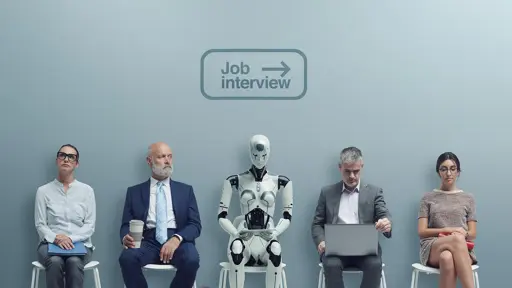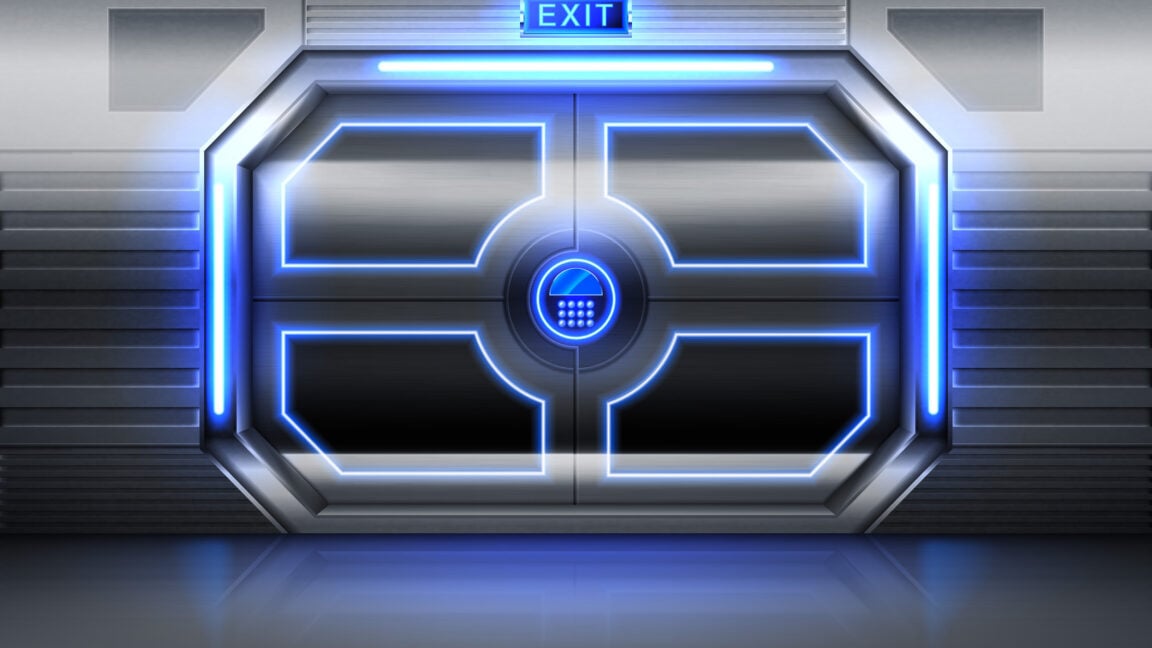Scientists make game-changing breakthrough that could slash costs of solar panels: 'Has the potential to contribute to the energy transition'
-
I am not a scientist so please correct me if I am off base, but did it really take them this long to attempt to focus light onto PV cells using a fresnel lens?
My hobby as a 15 year old was buying broken projectors to harvest the fresnel lenses in the lamp on top. They could focus sunlight so powerfully that you could burn shit. I didn't do that, surprisingly. I was like Marge Simpson, I just thought they were neat.
i guess a lot of research projects are just there to give the researchers something to do and money, and i'm sure the idea of using lenses has been floated before.
the thing is that it's not really as good an ideas as it originally seems. After all, you need heavy solid lenses that you have to install above all solar panels, and the cost of that is not negligible. On top of that, there's other problems that others have already mentioned.
-
My numbers were wrong:
Hardware costs (module, inverters, etc.) are about half the price of the installed residential cost. The rest is "soft costs", and labor is included in it, but it's a pretty small fraction of it. The "other" soft costs are the big thing--stuff like permitting and planning and sales taxes. Better efficiency might somewhat lower it, but not a lot.
Notice that when things get to utility-scale, those soft costs shrink a lot. The best way to do solar is in large fields of racks, and it isn't even close. The solution to this is community solar, where you and your neighbors go in on a field. Some states ban this, and that should change.
Yeah, community solar parks are really the best because they remove a whole lot of these soft costs.
These soft costs include:
- bureaucracy (you need 1 permit instead of 100 permits),
- nobody needs to climb on a roof,
- shipping many panels at once to the installation site is much more efficient than only shipping 5-8 modules at a time
additionally, any kind of fixed-cost complexity is spread over a bigger field.
i.e., you should add circuit breakers to make sure the solar panels don't feed into the grid when the energy prices are already negative. adding that breaker has a fixed and constant price. adding one breaker to a large park is more efficient than adding 100 breakers into just as many households.
-
I think the point is that you can replace one big solar panel with one big lens and a small solar panel. The footprint on the roof is the same, but the implication is a big glass lens is cheaper than a big solar panel.
the glass lens probably is cheaper than a big solar panel
but the cost of setting up a glass lens in 5-10 meters altitude (because that's what's needed to bundle any sunlight) and make it storm-proof is probably more expensive than setting up a big solar panel at hip height.
and considering that labor cost is a significant part (i guess 10% - 50%) of overall solar park cost, i guess it's probably not worth it.
-
Yeah, community solar parks are really the best because they remove a whole lot of these soft costs.
These soft costs include:
- bureaucracy (you need 1 permit instead of 100 permits),
- nobody needs to climb on a roof,
- shipping many panels at once to the installation site is much more efficient than only shipping 5-8 modules at a time
additionally, any kind of fixed-cost complexity is spread over a bigger field.
i.e., you should add circuit breakers to make sure the solar panels don't feed into the grid when the energy prices are already negative. adding that breaker has a fixed and constant price. adding one breaker to a large park is more efficient than adding 100 breakers into just as many households.
Thanks. There's way too many people who don't see the problems with rooftop residential solar. Commercial/industrial rooftop can work out, but fields are the cheapest electricity you can get.
-
Grid forming will just mean the keep running the house when the power goes off, it's not safe for them to be pushing power when it's disappeared, that has been set by regulation in many countries.
What you describe is more like black start, providing power to the grind when it is down. This has to be controlled well, and only a few plants need to be capable of it.
Grid following means something like whatever the grid does, the inverter injects power supporting it. A grid forming generator or inverter also follows the grid somewhat, but tries to get it to an optimal condition. This entails things like voltage control by reactive power, frequency control by operating reserve, fault ride trough capability and so on. Many of those are naturally provided by large conventional power plants using synchronous generators like gas, nuclear or hydro. For inverter based systems, they have to be considered explicitly. For battery storage most are relatively easy to implement, some also in solar inverters. The tech exists, but yes, in some countries the regulations have not kept up with rapid expanse of inverter based power generation in the last years.
-
I'm not sure what to think about the Fraunhofer institute in general. They have made some nice discoveries/inventions in the past, such as audio compression algorithms and such. That is why i hyped them for a bit.
But they really disappointed me with their writings on solar panels in the past few years.
They said that the efficiency of solar panels today is too low to deploy them widely in practice, which is simply not true. They tried pushing Perovskite solar cells for no reason.
I'm not sure what to think about this article's idea. On one hand, adding lenses to solar parks makes them significantly more complicated and therefore expensive to build. Also, if the parks have complicated physical forms, they're more susceptible to wind, and that could damage them.
On the other hand, yes, adding lenses means you need fewer actual solar panels for the same amount of energy harvested.
I'll therefore put it in the category of inconclusive inventions, together with the idea of adding a motor to the solar panels so they can track the sun. That would also make the solar panels more efficient, but also more complicated and more prone to mechanical failure.
I'd like to know what they're going to do about the heating issue. Concentrating solar radiation carries with it an increased heat load. And heat reduces solar PV efficiency. I'm already losing about 30% in summer when the panels heat up.
-
I'd like to know what they're going to do about the heating issue. Concentrating solar radiation carries with it an increased heat load. And heat reduces solar PV efficiency. I'm already losing about 30% in summer when the panels heat up.
This was my first question too! I thought heat makes them wear out faster.
-
cross-posted from: https://slrpnk.net/post/24690127
Solar energy experts in Germany are putting sun-catching cells under the magnifying glass with astounding results, according to multiple reports.
The Fraunhofer Institute for Solar Energy Systems team is perfecting the use of lenses to concentrate sunlight onto solar panels, reducing size and costs while increasing performance, Interesting Engineering and PV Magazine reported.
The "technology has the potential to contribute to the energy transition, facilitating the shift toward more sustainable and renewable energy sources by combining minimal carbon footprint and energy demand with low levelized cost of electricity," the researchers wrote in a study published by the IEEE Journal of Photovoltaics.
The sun-catcher is called a micro-concentrating photovoltaic, or CPV, cell. The lens makes it different from standard solar panels that convert sunlight to energy with average efficiency rates around 20%, per MarketWatch. Fraunhofer's improved CPV cell has an astounding 36% rate in ideal conditions and is made with lower-cost parts. It cuts semiconductor materials "by a factor of 1,300 and reduces module areas by 30% compared to current state-of-the-art CPV systems," per IE.
Hey it's those guys that invented MP3s.
-
cross-posted from: https://slrpnk.net/post/24690127
Solar energy experts in Germany are putting sun-catching cells under the magnifying glass with astounding results, according to multiple reports.
The Fraunhofer Institute for Solar Energy Systems team is perfecting the use of lenses to concentrate sunlight onto solar panels, reducing size and costs while increasing performance, Interesting Engineering and PV Magazine reported.
The "technology has the potential to contribute to the energy transition, facilitating the shift toward more sustainable and renewable energy sources by combining minimal carbon footprint and energy demand with low levelized cost of electricity," the researchers wrote in a study published by the IEEE Journal of Photovoltaics.
The sun-catcher is called a micro-concentrating photovoltaic, or CPV, cell. The lens makes it different from standard solar panels that convert sunlight to energy with average efficiency rates around 20%, per MarketWatch. Fraunhofer's improved CPV cell has an astounding 36% rate in ideal conditions and is made with lower-cost parts. It cuts semiconductor materials "by a factor of 1,300 and reduces module areas by 30% compared to current state-of-the-art CPV systems," per IE.
Just wanted to drop a comment.
I love solar. It's the best form of energy that's attainable by the average person.
-
Adding to what the others wrote, solar cells become less efficient at power conversion (light -> electricity) as the temp of the solar cell materials (semiconductors) increases. So the issues is how to get more photons to the semiconductor without heating it up.
Would a UV filtering lens help? Do solar cells generate more power from certain parts of the light spectrum?
-
cross-posted from: https://slrpnk.net/post/24690127
Solar energy experts in Germany are putting sun-catching cells under the magnifying glass with astounding results, according to multiple reports.
The Fraunhofer Institute for Solar Energy Systems team is perfecting the use of lenses to concentrate sunlight onto solar panels, reducing size and costs while increasing performance, Interesting Engineering and PV Magazine reported.
The "technology has the potential to contribute to the energy transition, facilitating the shift toward more sustainable and renewable energy sources by combining minimal carbon footprint and energy demand with low levelized cost of electricity," the researchers wrote in a study published by the IEEE Journal of Photovoltaics.
The sun-catcher is called a micro-concentrating photovoltaic, or CPV, cell. The lens makes it different from standard solar panels that convert sunlight to energy with average efficiency rates around 20%, per MarketWatch. Fraunhofer's improved CPV cell has an astounding 36% rate in ideal conditions and is made with lower-cost parts. It cuts semiconductor materials "by a factor of 1,300 and reduces module areas by 30% compared to current state-of-the-art CPV systems," per IE.
Concentrating solar cells have been around for decades, but I suppose the efficiency Fraunhofer achieved here is nothing to sneeze at.
-
cross-posted from: https://slrpnk.net/post/24690127
Solar energy experts in Germany are putting sun-catching cells under the magnifying glass with astounding results, according to multiple reports.
The Fraunhofer Institute for Solar Energy Systems team is perfecting the use of lenses to concentrate sunlight onto solar panels, reducing size and costs while increasing performance, Interesting Engineering and PV Magazine reported.
The "technology has the potential to contribute to the energy transition, facilitating the shift toward more sustainable and renewable energy sources by combining minimal carbon footprint and energy demand with low levelized cost of electricity," the researchers wrote in a study published by the IEEE Journal of Photovoltaics.
The sun-catcher is called a micro-concentrating photovoltaic, or CPV, cell. The lens makes it different from standard solar panels that convert sunlight to energy with average efficiency rates around 20%, per MarketWatch. Fraunhofer's improved CPV cell has an astounding 36% rate in ideal conditions and is made with lower-cost parts. It cuts semiconductor materials "by a factor of 1,300 and reduces module areas by 30% compared to current state-of-the-art CPV systems," per IE.
I feel like this is one of those discoveries thats like, well duh of course it would work that way
-
This was my first question too! I thought heat makes them wear out faster.
It does. Also seems weird nobody thought of a magnifying glass before.
But its also the beauty in science. Now somebody else thought about it, and they might work harder to fix the next problem: Heat.
If that gets better now, solar panels will increase in output even more. There are so many technologies going into one product, and each field have its own experts.
I'm excited.
-
Hey it's those guys that invented MP3s.
It really whips the sun's ass.
-
I'm not sure what to think about the Fraunhofer institute in general. They have made some nice discoveries/inventions in the past, such as audio compression algorithms and such. That is why i hyped them for a bit.
But they really disappointed me with their writings on solar panels in the past few years.
They said that the efficiency of solar panels today is too low to deploy them widely in practice, which is simply not true. They tried pushing Perovskite solar cells for no reason.
I'm not sure what to think about this article's idea. On one hand, adding lenses to solar parks makes them significantly more complicated and therefore expensive to build. Also, if the parks have complicated physical forms, they're more susceptible to wind, and that could damage them.
On the other hand, yes, adding lenses means you need fewer actual solar panels for the same amount of energy harvested.
I'll therefore put it in the category of inconclusive inventions, together with the idea of adding a motor to the solar panels so they can track the sun. That would also make the solar panels more efficient, but also more complicated and more prone to mechanical failure.
well, adding lenses kinda requires motorizing the panels to track the sun, right? otherwise the "hot spot" is going to move around across the day/year
is there a way to shape the lens to mitigate this?
-
cross-posted from: https://slrpnk.net/post/24690127
Solar energy experts in Germany are putting sun-catching cells under the magnifying glass with astounding results, according to multiple reports.
The Fraunhofer Institute for Solar Energy Systems team is perfecting the use of lenses to concentrate sunlight onto solar panels, reducing size and costs while increasing performance, Interesting Engineering and PV Magazine reported.
The "technology has the potential to contribute to the energy transition, facilitating the shift toward more sustainable and renewable energy sources by combining minimal carbon footprint and energy demand with low levelized cost of electricity," the researchers wrote in a study published by the IEEE Journal of Photovoltaics.
The sun-catcher is called a micro-concentrating photovoltaic, or CPV, cell. The lens makes it different from standard solar panels that convert sunlight to energy with average efficiency rates around 20%, per MarketWatch. Fraunhofer's improved CPV cell has an astounding 36% rate in ideal conditions and is made with lower-cost parts. It cuts semiconductor materials "by a factor of 1,300 and reduces module areas by 30% compared to current state-of-the-art CPV systems," per IE.
I thought this has already been done. Guess there's some nuance to it that is above my understanding of it.
Anyhow, advancements in solar are cool in my book.
-
well, adding lenses kinda requires motorizing the panels to track the sun, right? otherwise the "hot spot" is going to move around across the day/year
is there a way to shape the lens to mitigate this?
You make them convex.
You can shape them that no matter how the light falls on it, it will align to the center. Kind of like how satellite dishes work but in reverse.
-
well, adding lenses kinda requires motorizing the panels to track the sun, right? otherwise the "hot spot" is going to move around across the day/year
is there a way to shape the lens to mitigate this?
Could have some refraction or hologram thing that bends the light the right way, maybe? Or like a matte glass that equalises the load.
Or why not just use (big) mirrors?
Won't help with heat ofc!
-
It does. Also seems weird nobody thought of a magnifying glass before.
But its also the beauty in science. Now somebody else thought about it, and they might work harder to fix the next problem: Heat.
If that gets better now, solar panels will increase in output even more. There are so many technologies going into one product, and each field have its own experts.
I'm excited.
They probably did, but like they said, the heating is probably the issue.
I can see them adding a cooling element. Maybe even water cooling.
-
Hey it's those guys that invented MP3s.
Lossy compression of sunlight?







